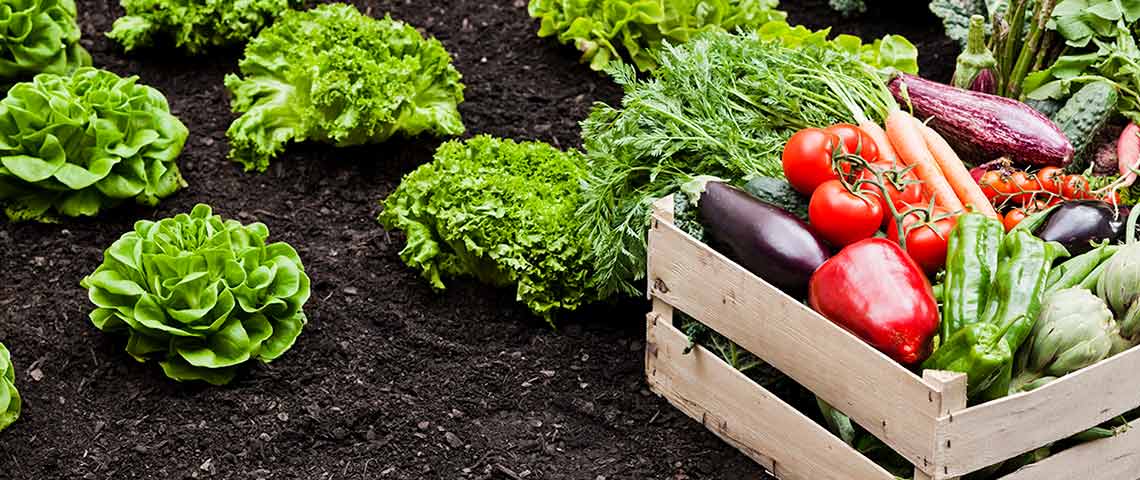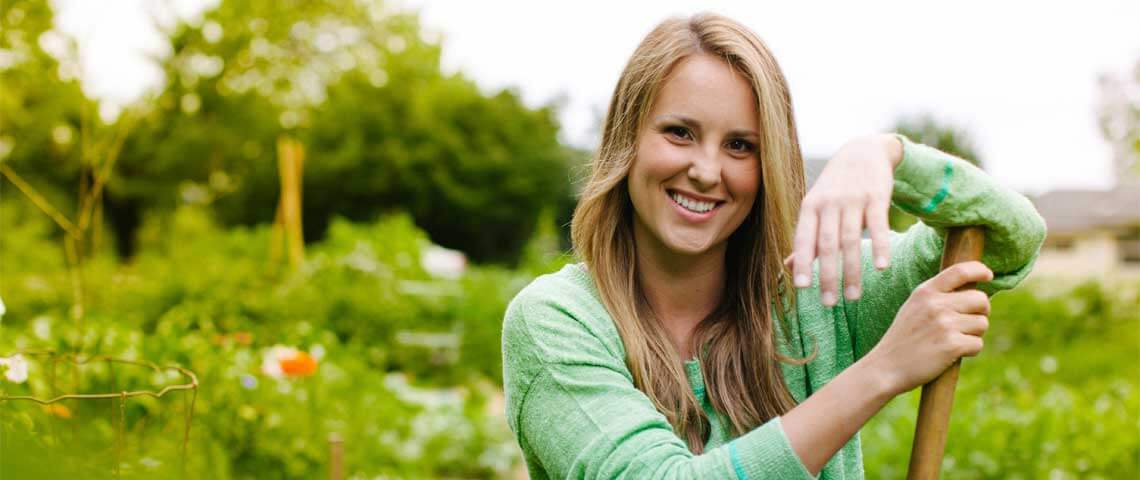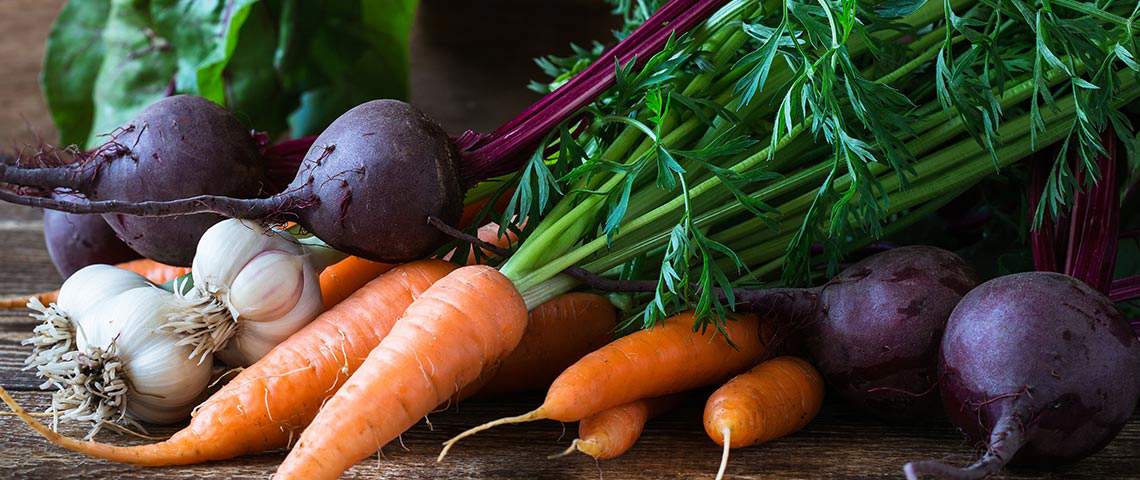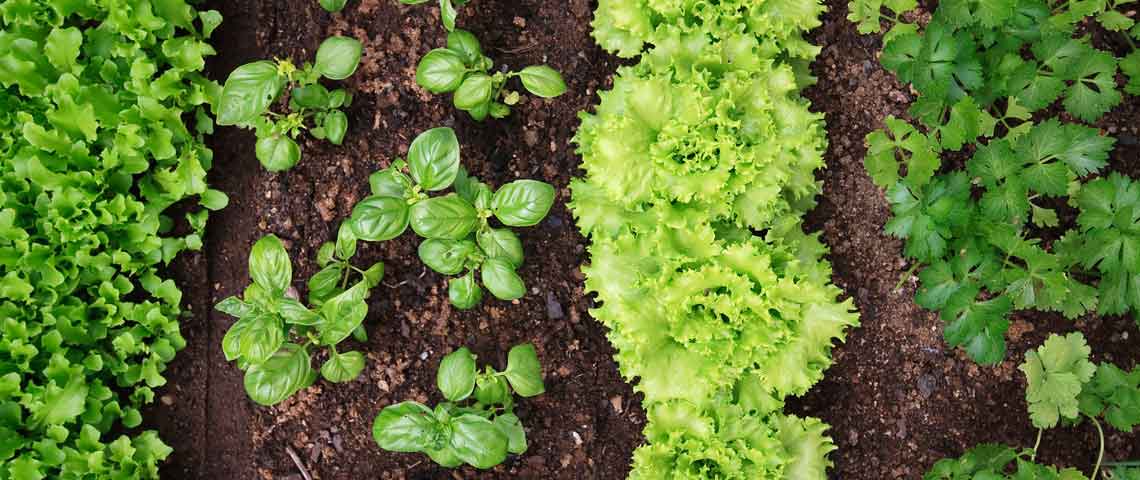How to Prepare Garden Soil for Planting
Getting to know your garden soil is one of the best parts of gardening. Beautiful plants rely on soil to access nutrients, water and even air. Once you make the connection between good garden soil preparation and over-the-top harvests, you'll never call it "dirt" again. These basics on how to prepare your garden soil can help you and your plants win:
- Getting Started with Garden Soil
- Understanding Soil Types
- Testing Your Soil's pH
- Improving Your Garden Soil
- Keeping Garden Soil Healthy
Getting Started with Garden Soil
Preparing garden soil starts with deciding where to plant. Most vegetables and fruits prefer at least six to eight hours of daily sun. Sunny garden spots aren't just for plants; they're good for pollinators, too. And more pollinators in your garden mean bigger, better flowers, fruits and vegetables for you.
Proper timing is essential when prepping garden soil. If you start working when soil's too wet, you can damage soil's structure. It may look the same to you, but your soil will pay the price. To know if soil's ready, squeeze a handful. It should crumble and fall through your fingers. If it clumps together, give it more time.
If your garden has weeds or grass, take time to remove them. They'll steal water and nutrients from the crops you grow. Unless you've had erosion problems or moved soil from the site, you shouldn't need to add garden soil.

Before you prepare your garden, make sure soil is dry enough to work.
Understanding Soil Types
Garden soil is much denser than potting mixes and potting soils used for containers and houseplants. Potting mixes are often soilless; they're designed for the containers, not outdoor garden plots. Never use garden soil in containers, even mixed with potting mix. The heavy soil can cause drainage problems and encourage disease for plants in pots.
Your garden soil's characteristics depend on the natural soil and rocks where you live. Soil comes in three primary types: clay, silt and sand.
- Clay has small particles that hold onto water and nutrients, but often drain poorly.
- Silt has medium-size particles that hold water and nutrients but also drain well.
- Sand has large particles that allow water and nutrients to leach away quickly.
Most garden soils are a mix of all three soil types. Loamy soil, ideal for vegetables, has roughly equal parts clay, silt and sand. Very few gardens start with ideal soil, but good soil preparation can change that.
Testing Your Soil's pH
Knowing your soil's pH eliminates a lot of garden guesswork so you can grow the best possible crops. The pH scale is the same for soil as it is for liquids. It runs from 0 to 14, with 7 as the neutral midpoint. A pH lower than 7 signals acidic soil, while pH above 7 indicates alkaline.
Soil pH is important because pH influences nutrient availability in your soil. That includes nutrients you add with fertilizers. When soil pH gets out of balance, existing nutrients get tied up. Even if you add more fertilizer, plants can't take up the nutrients.
By testing your soil — a very simple task — you can know your soil pH and fix it. Most plants do well in the slightly acidic range of 6.0 to 7.0 pH. But some plants, such as blueberries and azaleas, need acidic soil to get the nutrients they need. Your local county extension office is an excellent source for soil testing information.

Work garden amendments into soil where plant roots will grow.
Improving Your Garden Soil
Soil test results include recommendations on what your soil needs and how to improve it with soil amendments. Amending soil with organic matter such as compost can improve your soil's structure and plant growth.
If your soil pH is overly acidic, Pennington Fast Acting Lime can help raise soil pH and restore balance. Lilly Miller Garden Gypsum can help loosen heavy clay soil and promote better drainage. Its calcium and sulfur help correct salty alkaline soil, too.
Incorporate amendments into your soil with hand tools or a tiller. Place a 3- to 4-inch layer of compost over your bare garden soil and work it in about 6 inches deep — most plant roots stay in that zone. Add lime, gypsum and other amendments at the same time.
This is also the perfect time to incorporate a balanced fertilizer such as Pennington Rejuvenate Plant Food All Purpose 4-4-4 to give your garden a solid nutritional foundation and give you bigger plants with more blooms and fruits.

Once your soil is prepped, it's time to plant and enjoy!
Keeping Garden Soil Healthy
Once you plant, take steps to keep soil healthy and strong. Vegetables use up a lot of soil nutrients, especially in productive backyard gardens. So test your soil pH every two to three years to keep soil pH where it needs to be.
What you feed growing plants also makes a difference. A naturally based fertilizer such as OMRI-listed Alaska Fish Fertilizer 5-1-1 provides your veggies and flowers with essential plant nutrients and augments organic matter in your soil. Organic matter breaks down to release nutrients, plus it helps naturally occurring beneficial soil microbes do their best work.
A final layer of garden mulch helps your soil and plants in several ways. Mulch keeps soil temperatures more constant, discourages weed seeds from germinating, and helps soil retain moisture. It also protects soil from eroding rains and winds. A 1- to 2-inch layer of organic compost is an excellent mulch. So is clean, weed-free straw.
By taking time to know your soil and prepare your garden, you help ensure your plants reach peak beauty and productivity. From preparing garden soil to enjoying veggies, fruits and blooms, Pennington is here for you every step of the way.
Always read product labels thoroughly and follow instructions.
Pennington is a registered trademark of Pennington Seed, Inc.
Lilly Miller and Alaska are registered trademarks of Central Garden & Pet Company.




